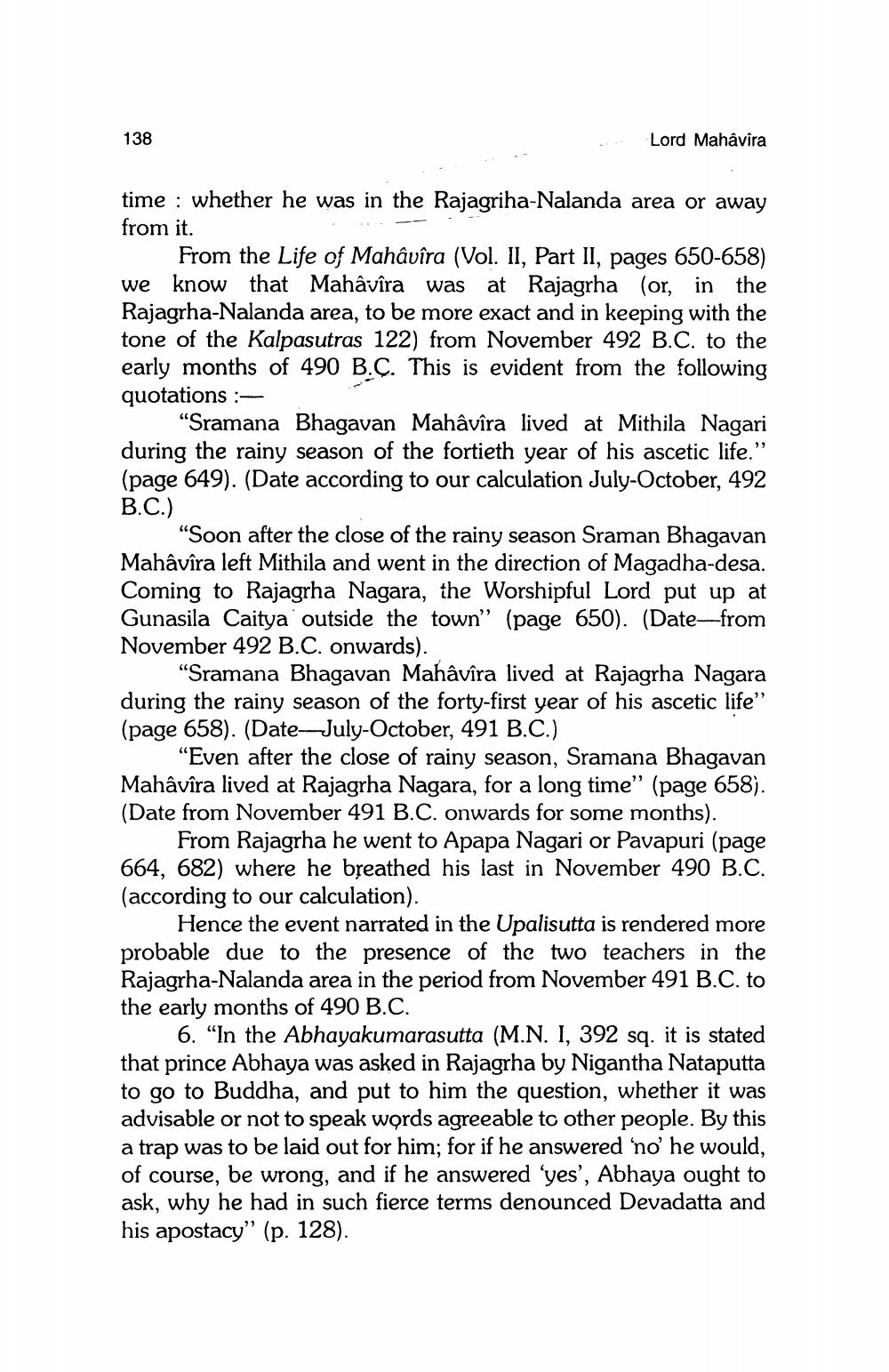________________
138
Lord Mahâvîra
time whether he was in the Rajagriha-Nalanda area or away from it.
From the Life of Mahâvîra (Vol. II, Part II, pages 650-658) we know that Mahâvîra was at Rajagrha (or, in the Rajagrha-Nalanda area, to be more exact and in keeping with the tone of the Kalpasutras 122) from November 492 B.C. to the early months of 490 B.C. This is evident from the following quotations :
"Sramana Bhagavan Mahâvîra lived at Mithila Nagari during the rainy season of the fortieth year of his ascetic life." (page 649). (Date according to our calculation July-October, 492 B.C.)
"Soon after the close of the rainy season Sraman Bhagavan Mahâvîra left Mithila and went in the direction of Magadha-desa. Coming to Rajagrha Nagara, the Worshipful Lord put up at Gunasila Caitya outside the town" (page 650). (Date-from November 492 B.C. onwards).
"Sramana Bhagavan Mahâvîra lived at Rajagrha Nagara during the rainy season of the forty-first year of his ascetic life" (page 658). (Date-July-October, 491 B.C.)
"Even after the close of rainy season, Sramana Bhagavan Mahâvîra lived at Rajagrha Nagara, for a long time" (page 658). (Date from November 491 B.C. onwards for some months).
From Rajagrha he went to Apapa Nagari or Pavapuri (page 664, 682) where he breathed his last in November 490 B.C. (according to our calculation).
Hence the event narrated in the Upalisutta is rendered more probable due to the presence of the two teachers in the Rajagrha-Nalanda area in the period from November 491 B.C. to the early months of 490 B.C.
6. "In the Abhayakumarasutta (M.N. I, 392 sq. it is stated that prince Abhaya was asked in Rajagrha by Nigantha Nataputta to go to Buddha, and put to him the question, whether it was advisable or not to speak words agreeable to other people. By this a trap was to be laid out for him; for if he answered 'no' he would, of course, be wrong, and if he answered 'yes', Abhaya ought to ask, why he had in such fierce terms denounced Devadatta and his apostacy" (p. 128).




